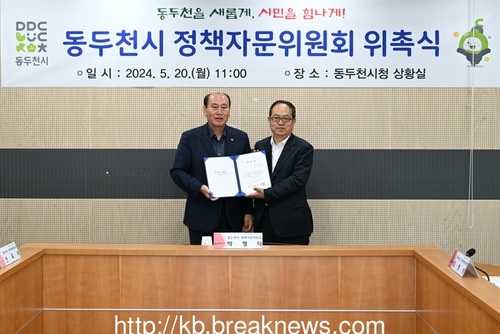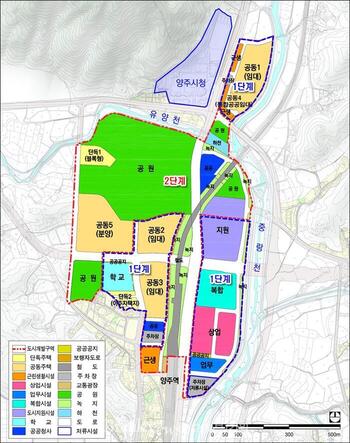의정부을지대학교병원, 일어설 때 수축기혈압 변화 클수록 만성콩팥병 위험 증가해
아시아 최초, 약 7천명 대상 코호트 연구/의정부을지대병원 신장내과 고현이, 이성우 교수 연구팀
의정부을지대학교병원, 일어설 때 수축기혈압 변화 클수록 만성콩팥병 위험 증가해아시아 최초, 약 7천명 대상 코호트 연구/의정부을지대병원 신장내과 고현이, 이성우 교수 연구팀
[장선희 기자= 경기북부/강원] 누웠을 때와 서 있을 때 수축기혈압(최고혈압)의 감소 변화가 클수록 만성콩팥병 발생률이 증가한다는 연구 결과가 나왔다고 전했다.
아시아인을 대상으로 기립성 혈압 변화에 대한 연구 결과가 나온 것은 이번이 처음이라고 했다.
의정부을지대학교병원 신장내과 고현이, 이성우 교수 연구팀은 국내 코호트 연구 참가자 7,039명을 대상으로 누운 상태에서 잰 혈압과 누웠다 일어나 2분 후 잰 혈압을 각각 측정해 기립성 혈압 변화가 만성콩팥병 발생에 미치는 영향을 분석했고, 연구에서 코호트 등록 이후 총 8회 측정된 신기능 중 사구체여과율(eGFR) 수치가 만성콩팥병 진단 범위(60mL/min/1.73m2) 아래로 2회 이상 측정된 사람은 949명이었고 이들은 기립성 수축기혈압 저하와 큰 연관성을 보였다고 했다.
즉 이들은 기립성 수축기혈압 저하가 있을 때 만성콩팥병 위험도가 평균 1.337배 증가했고, 반면에 기립성 수축기혈압이 1mmHg 높아질 때마다 만성콩팥병 위험도는 0.989배 감소했다고 했다. (표1 참조)
이는 누워서 잰 수축기혈압이 130mmHg으로 동일해도 누웠다 일어나 2분 후 잰 수축기혈압이 120mmHg인 사람은 131mmHg인 사람에 비해 만성콩팥병 발생 위험이 33.7% 높다는 것을 의미한다고 전했다.
연구에서는 또 기립성 수축기혈압의 감소가 '고령'이거나, '당뇨병'이 있는 사람에서 관찰될 가능성이 높고, 상대적으로 '남성'이거나 '체질량지수(BMI)'가 높은 사람에서는 그 가능성이 낮은 것으로 확인됐다고 했다.(표2 참조)
의정부을지대병원 신장내과 고현이 교수는 “이번 연구를 통해 기립성 혈압 변화 중 수축기혈압의 감소변화가 만성콩팥병 발생의 위험요인이라는 사실이 밝혀졌다”며, “수축기혈압의 변화를 유심히 관찰한다면 만성콩팥병 발생률을 크게 줄이는 데 도움이 될 것”이라고 말했다.
이번 연구는 SCIE 국제 학술지인 American Journal of Hypertension(SCIE, IF 2.689) 최신호에 게재됐다고 했다.
*아래는 위 기사를 '구글 번역'으로 번역한 영문 기사의 [전문]입니다. '구글번역'은 이해도를 높이기 위해 노력하고 있습니다. 영문 번역에 오류가 있을 수 있음을 전제로 합니다. *The following is [the full text] of the English article translated by 'Google Translate'. 'Google Translate' is working hard to improve understanding. It is assumed that there may be errors in the English translation.
Uijeongbu Eulji University Hospital, the greater the change in systolic blood pressure when standing up, the greater the risk of chronic kidney disease
Asia’s first cohort study of about 7,000 people/ Research team of Professors Koh Hyun-i and Lee Seong-woo, Department of Renal Internal Medicine, Uijeongbu Eulji University Hospital
[Reporter Jang Seon-hee = Northern Gyeonggi/Gangwon] A study found that the greater the decrease in systolic blood pressure (systolic blood pressure) when lying and standing, the greater the incidence of chronic kidney disease.
This is the first time that the results of a study on orthostatic blood pressure changes in Asians have been published.
The research team, led by Professors Koh Hyun-i and Lee Seong-woo of the Department of Renal Internal Medicine at Uijeongbu Eulji University Hospital, measured the blood pressure measured while lying down and 2 minutes after waking up from lying down on 7,039 domestic cohort study participants. The effect was analyzed, and among the renal function measured 8 times after cohort enrollment in the study, there were 949 people whose glomerular filtration rate (eGFR) was below the chronic kidney disease diagnostic range (60 mL/min/1.73 m2) at least twice. It was found to be significantly associated with lowering of orthostatic systolic blood pressure.
In other words, when the orthostatic systolic blood pressure decreased, the risk of chronic kidney disease increased by 1.337 times on average, while the risk of chronic kidney disease decreased by 0.989 times for every 1 mmHg increase in the orthostatic systolic blood pressure. (See Table 1)
This means that even if the systolic blood pressure measured while lying down is the same as 130 mmHg, those with a systolic blood pressure of 120 mmHg measured 2 minutes after waking up from lying down had a 33.7% higher risk of developing chronic kidney disease than those with 131 mmHg.
The study also found that the decrease in orthostatic systolic blood pressure was more likely to be observed in people with 'old age' or 'diabetes', and was less likely to be observed in 'males' or people with high body mass index (BMI). It was confirmed. (See Table 2)
Professor Koh Hyun-i, Department of Renal Internal Medicine, Uijeongbu Eulji University Hospital, said, “Through this study, it was found that the decrease in systolic blood pressure among the changes in orthostatic blood pressure is a risk factor for the development of chronic kidney disease. It will help significantly reduce the incidence of kidney disease.”
This study was published in the latest issue of the American Journal of Hypertension (SCIE, IF 2.689), an international journal of SCIE.
이 기사 좋아요
<저작권자 ⓒ 브레이크뉴스 경기북부 무단전재 및 재배포 금지>

댓글
장선희 기자, 의정부시, 의정부을지대학교병원, 신장내과, 수축기혈압, 최고혈압, 감소변화, 만성콩팥병, 기립성 혈압 변화 관련기사목록
|
많이 본 기사
경기북부 많이 본 기사
|































